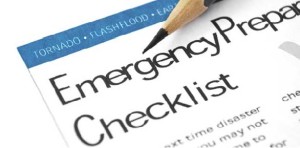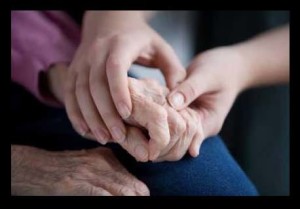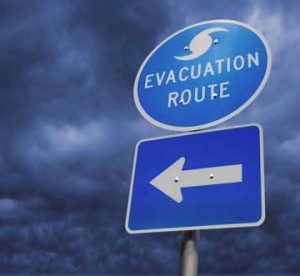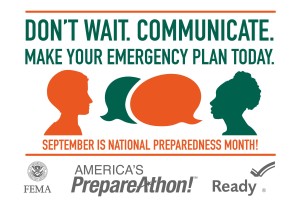 September is National Preparedness Month (#NatlPrep) – a reminder to everyone that your ability to recover from an emergency tomorrow depends on the planning you do today. Would you know where to find your family if a disaster happened today and you couldn’t get back home? If you only had minutes to evacuate your home, would you know what to take? Make a plan and know what to do during a disaster.
September is National Preparedness Month (#NatlPrep) – a reminder to everyone that your ability to recover from an emergency tomorrow depends on the planning you do today. Would you know where to find your family if a disaster happened today and you couldn’t get back home? If you only had minutes to evacuate your home, would you know what to take? Make a plan and know what to do during a disaster.
How to Make an Emergency Plan
Emergency plans should include plans for your home, for your workplace or school, for anyone caring for your children or elderly or disabled family members, and even for your commute. Have an up-to-date contact list for anyone you may need to reach during a disaster. You should also know your community’s evacuation plan and know routes to take in case of disaster.
Your family may not be together if disaster strikes, so plan how you will contact one another.
Make a Contact Plan
Identify a contact such as a friend or relative who lives out-of-state so that family members can notify them that they are safe. It may be easier to make a long-distance phone call than to call locally – an out-of-town contact may be in a better position to communicate among separated family members. Complete a contact card for each adult family member to carry in a wallet or briefcase. Make additional contact cards for each child’s backpack. Be sure to let the emergency contact know they have been designated.
Be sure every family member knows the phone number and has a cell phone, coins or a prepaid phone card to call the emergency contact. For everyone with a cell phone, program the emergency contact as “ICE” (In Case of Emergency). If you are in an accident, emergency personnel will often check your cell phone contacts for an “ICE” listing. Teach family members how to use text messaging – text messages can often get through network disruptions when a phone call may not.
Senior Citizen Preparedness
Senior citizens may have special needs during an emergency. In preparation for a disaster, senior citizens who receive federal benefits should consider receiving payments electronically in case of mail service disruption. Create a network of relatives, neighbors or friends to assist in an emergency. Make sure the emergency contact knows how to operate any necessary equipment for seniors who require medical devices. Seniors should have an emergency kit ready with copies of documents – including Medicare information – extra wheelchair batteries, oxygen, catheters, medication, food for service animals and any other items that are needed. Make arrangements for assistance to get to a shelter.
receiving payments electronically in case of mail service disruption. Create a network of relatives, neighbors or friends to assist in an emergency. Make sure the emergency contact knows how to operate any necessary equipment for seniors who require medical devices. Seniors should have an emergency kit ready with copies of documents – including Medicare information – extra wheelchair batteries, oxygen, catheters, medication, food for service animals and any other items that are needed. Make arrangements for assistance to get to a shelter.
Individuals with Disabilities
Individuals with disabilities and others with access and functional needs should evaluate their own individual needs and make an emergency plan so that they and their family can be better prepared. Share the emergency plan with family and neighbors, including information for connecting through relay services for the deaf or hard of hearing, for those with a speech disability, and for the visually impaired. Determine what medical devices or assistive technology devices are needed in case of an evacuation.
Don’t forget to make an emergency plan for your pets, too.
 If you evacuate your home, do not leave your pets behind! Pets most likely cannot survive on their own and, if they do, you may not be able to find them when you return. Remember, for health reasons, pets may not be allowed in a public shelters.
If you evacuate your home, do not leave your pets behind! Pets most likely cannot survive on their own and, if they do, you may not be able to find them when you return. Remember, for health reasons, pets may not be allowed in a public shelters.
Develop a plan with neighbors or relatives to make sure that someone is available to care for or evacuate your pets if you are unable to do so. Identify hotels/motels that allow pets. Pack a pet survival kit that can be easily grabbed – include pet food, can opener, bottled water, medications, veterinary records, a leash or harness, pet carrier and other supplies. Make sure identification tags are up-to-date and securely fastened to your pet’s collar.
For more information about making an emergency plan, creating a preparedness kit, and specific information for disasters that may occur where you live – such as floods, earthquakes and hurricanes – visit Ready.gov. To learn how you can have an active role in responding to disasters in your community, consider volunteering through the Maryland Responds Medical Reserve Corps.

